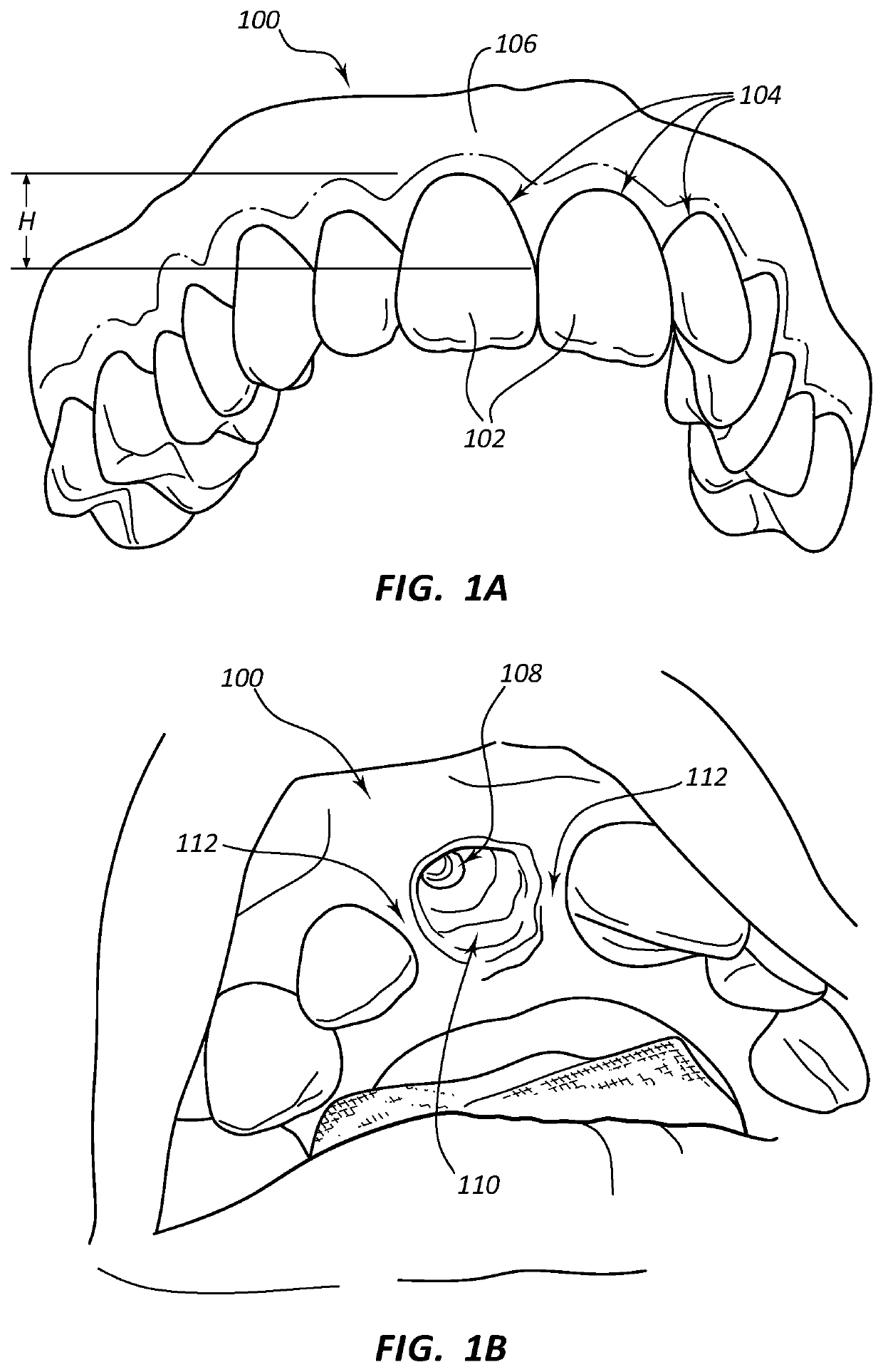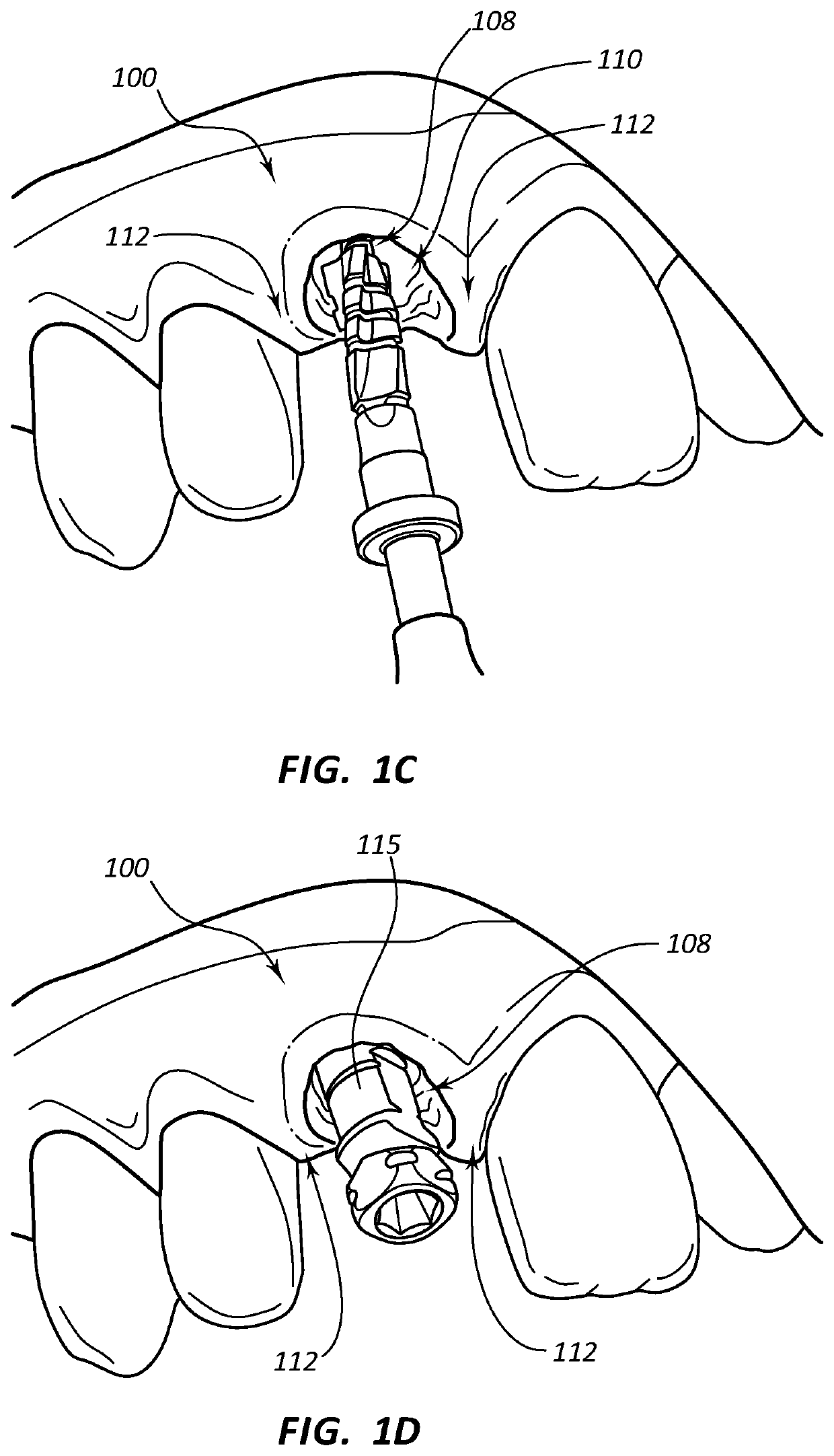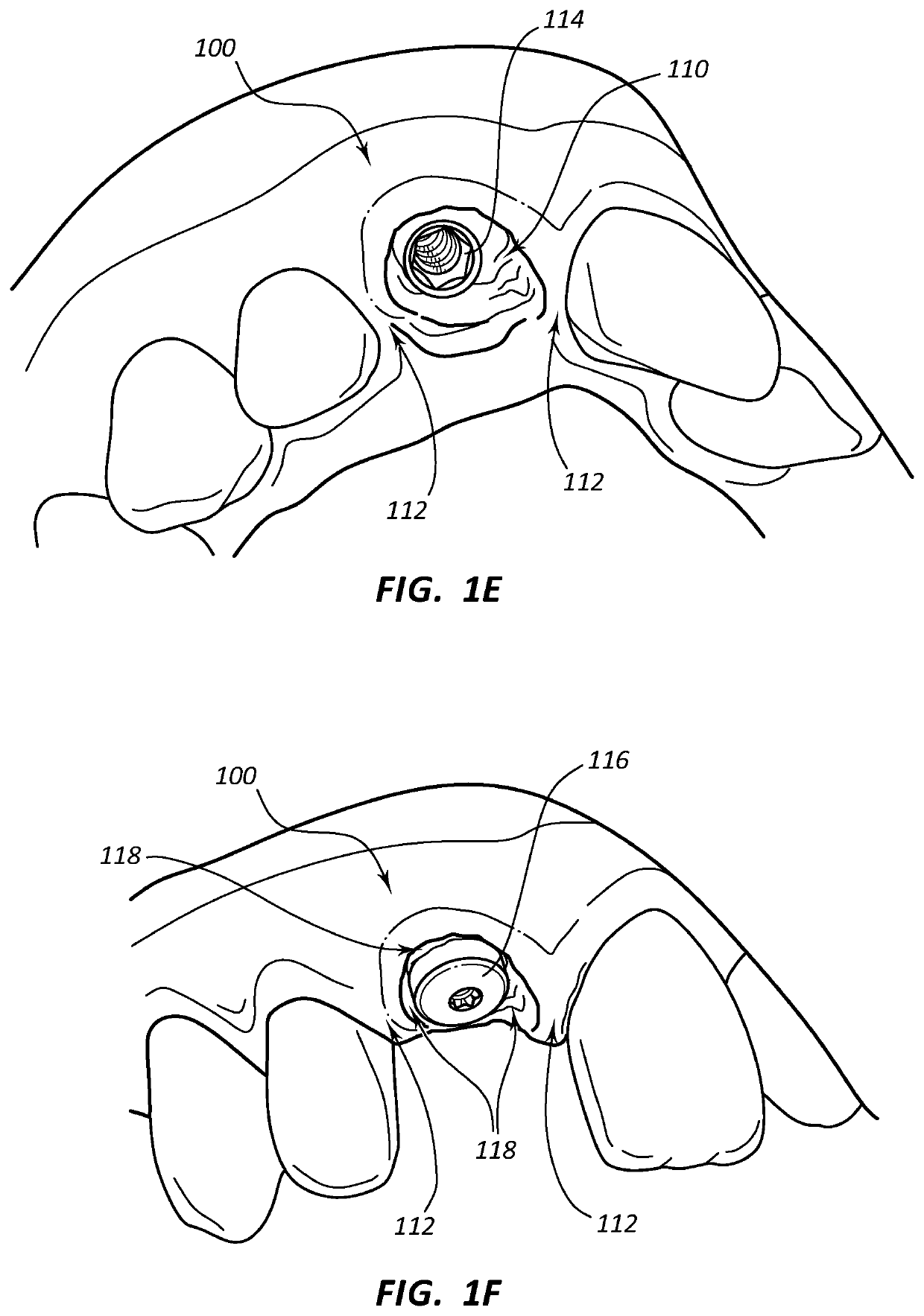Dental implants with markers for determining three-dimensional positioning
a three-dimensional positioning and marker technology, applied in the field of dental implants, can solve the problem of not being able to provide sufficient three-dimensional image scanned data, and achieve the effects of reducing the number of procedures for patients, reducing the number of procedures, and reducing the amount of time and materials
- Summary
- Abstract
- Description
- Claims
- Application Information
AI Technical Summary
Benefits of technology
Problems solved by technology
Method used
Image
Examples
Embodiment Construction
I. Introduction
One problem with conventional healing caps and related methods of oral surgery is that those features of the gingiva that provide much of the characteristic natural aesthetic appearance of natural teeth and adjacent gum tissue are almost always lost once a tooth is pulled and replaced with a prosthesis. In particular, the gingival tissue surrounding the crown of a natural tooth where it emerges (i.e., its emergence profile) is lost during such procedures.
The gingival cuff refers to the generally scalloped pattern of the gingival tissue that is most prominently seen along the buccal surface of the teeth. The height of contour of the gingival cuff refers to the difference between the most occlusal extension of the gingiva (i.e., between teeth) as compared to its location at the center of a tooth. Generally, the height of contour of the gingival cuff is greatest at a location between two adjacent teeth. In other words, the location of the gingival cuff extends occlusally...
PUM
 Login to View More
Login to View More Abstract
Description
Claims
Application Information
 Login to View More
Login to View More - R&D
- Intellectual Property
- Life Sciences
- Materials
- Tech Scout
- Unparalleled Data Quality
- Higher Quality Content
- 60% Fewer Hallucinations
Browse by: Latest US Patents, China's latest patents, Technical Efficacy Thesaurus, Application Domain, Technology Topic, Popular Technical Reports.
© 2025 PatSnap. All rights reserved.Legal|Privacy policy|Modern Slavery Act Transparency Statement|Sitemap|About US| Contact US: help@patsnap.com



